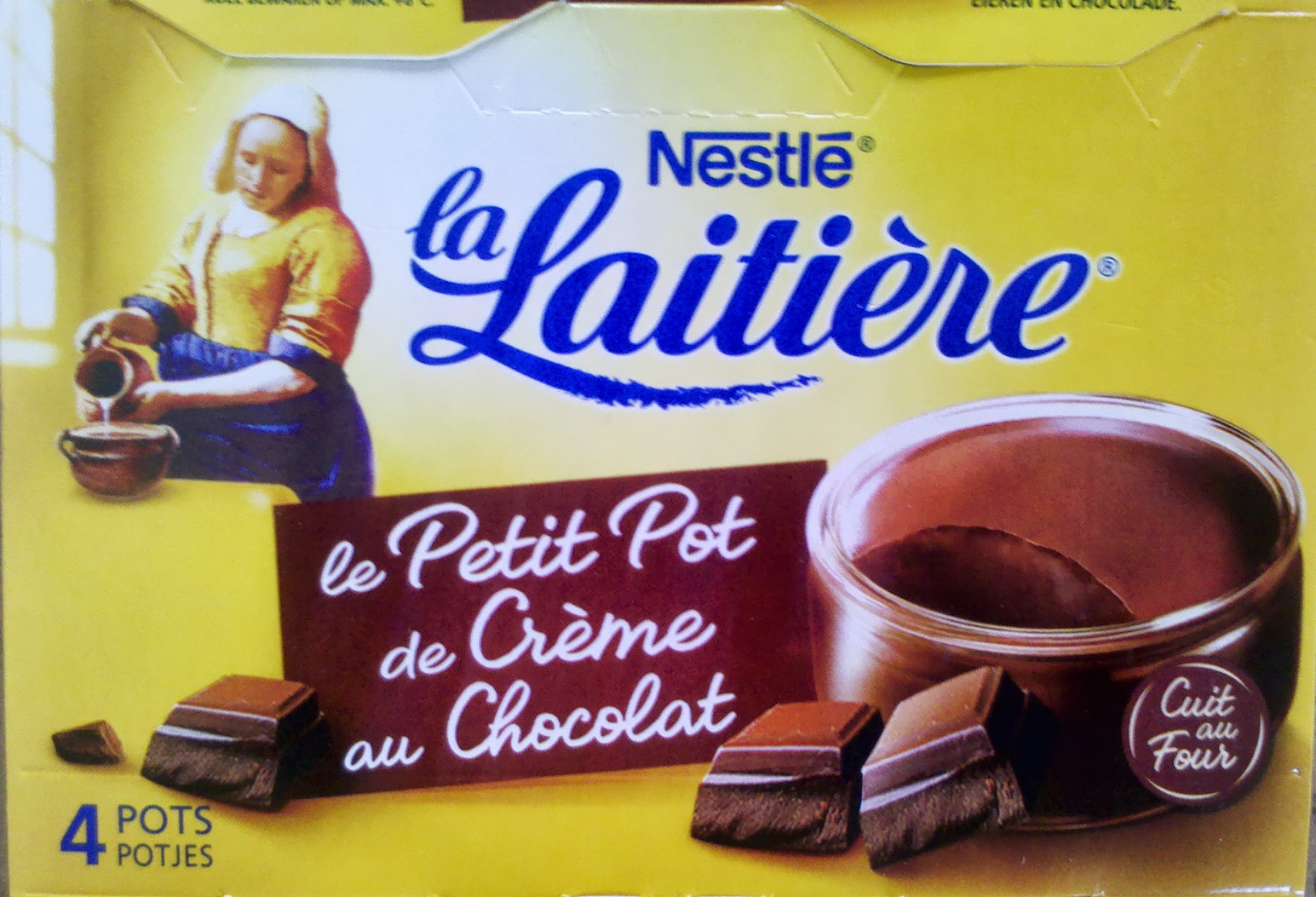Le Petit Pot de Crème au Chocolat (4 Pots) - La Laitière - 400 g (4 x 100 g)
Important note: this product is no longer sold. The data is kept for reference only. This product does not appear in regular searches and is not taken into account for statistics.
This product page is not complete. You can help to complete it by editing it and adding more data from the photos we have, or by taking more photos using the app for Android or iPhone/iPad. Thank you!
×
Barcode: 3023292220014 (EAN / EAN-13)
Common name: Dessert lacté aux œufs et au chocolat, cuit au four
Quantity: 400 g (4 x 100 g)
Packaging: Glass, Pot, Cardboard, Fresh, Seal, Sleeve
Brands: La Laitière, Nestlé
Categories: Dairies, Desserts, Dairy desserts, Chocolate desserts, Custard puddings, Chocolate custard puddings
Labels, certifications, awards:
Green Dot, fr:Cuit au Four, fr:Eco-Emballages, fr:Nutritional Compass®
Manufacturing or processing places: Lactalis Nestlé Ultra-Frais Marques - LNUF Marques (Filiale Groupe Lactalis) - 341 Rue François Anicot - 59553 Cuincy, Nord, Nord-Pas-de-Calais, France
Traceability code: FR 59.165.030 CE - Cuincy (Nord, France)
Link to the product page on the official site of the producer: http://www.enviedebienmanger.fr/des-marq...
Stores: Franprix
Countries where sold: France
Matching with your preferences
Environment
Packaging
Transportation
Report a problem
Data sources
Product added on by openfoodfacts-contributors
Last edit of product page on by moon-rabbit.
Product page also edited by ecoscore-impact-estimator, fred-chauviere, jacob80, jeanbono, kiliweb, nvallas, packbot, raphael0202, sloops.











